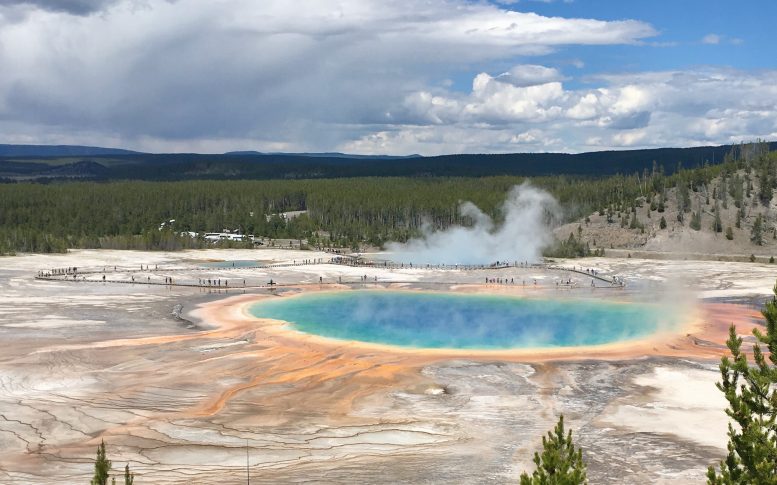
A study on Yellowstone National Park reveals that while tourism significantly adds to carbon emissions, mainly through travel, the park’s ecosystems absorb more carbon than the visitors emit. This research suggests ways to reduce the carbon footprint of tourism and highlights the need for more comprehensive studies on its environmental effects. Credit: Emily Wilkins, CC-BY 4.0
Individuals rely on the natural systems composed of trees, grasslands, and bushes to absorb carbon from the air and sequester it beneath the surface, a critical process in mitigating the march toward a climate catastrophe. Ironically, these same protected spaces also tend to be highly photogenic hot spots for tourism.
New research from the Quinney College of Natural Resources and the Institute of Outdoor Recreation and Tourism makes a case study of one such place — Yellowstone National Park — to calculate surplus carbon visitors from across the world add to the atmosphere each year as a direct result of a park visit.
Emily Wilkins and Jordan Smith from the Department of Environment and Society and colleagues leveraged existing data to create a tally of carbon emissions generated by one year of tourist visits to Yellowstone National Park, a popular destination that can receive over 4 million visitors per year. They estimated that recreation visits to the park produce just over one megaton of carbon emissions per year, an average of 479 kilograms attributable to each visitor (about the weight of a grand piano).
Emission Sources and Strategies for Reduction
The bulk of those emissions occur before a visitor even spies a geyser or a wandering wolf pack. Travel to and from the park entrance accounts for almost 90 percent of the total. Another 5 percent is produced as visitors move from place to place within park boundaries and four percent is sourced in overnight accommodations. Just 1 percent of the total comes from park operations such as visitor centers, museums, shops and restaurants.
Just over one-third of visits to Yellowstone involve someone taking a flight, but those particular trips accounted for a whopping 72 percent of the emissions for out-of-park transit.
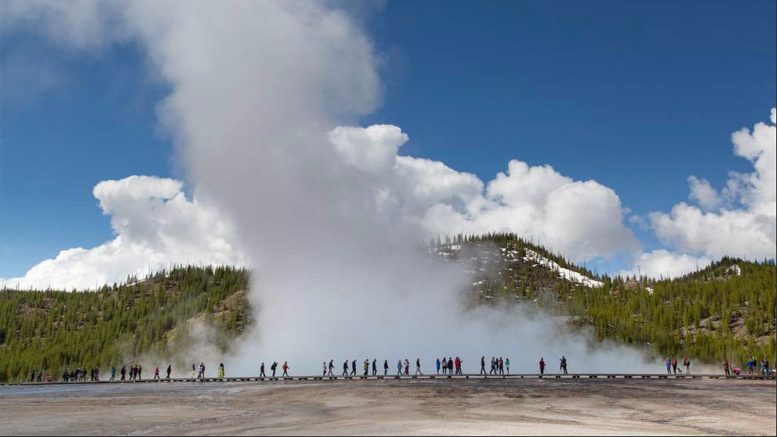
Visitors walk the boardwalk at the Grand Prismatic Spring in Yellowstone National Park. Credit: National Park Service
“As the tourism industry explores strategies to reduce their carbon impact, this could be low-hanging fruit,” said Wilkins, who now works with the U.S. Geological Survey. “Future campaigns to encourage a greater proportion of visitors from nearby locations rather than Europe or Asia, or encouraging driving over flying, have potential for big impacts on reducing these emission numbers.”
Net Benefit and the Need for Further Research
But it seems that carbon accounting for Yellowstone National Park is still in the black.
“Interestingly, ecosystems within the park boundary pull around 1.5 megatons of carbon from the atmosphere each year,” Smith said. “So, even accounting for the significant impact of tourism, there is a net benefit in the system as a carbon sink.”
This is almost certainly not the case for smaller parks with high visitation numbers, he said.
This new method for calculating the carbon impact of tourism for national parks is designed to be adaptable for application to other parks and protected areas, Smith said, to help decision-makers evaluate the effectiveness of potential emission reduction strategies.
Tourism is no lightweight player in the world’s total carbon tally. By one account, tourism accounted for 8 percent of annual global carbon emissions, with the U.S. earning the dubious honor of the highest total tourism carbon footprint in the world. And that number is expected to grow.
It’s important to note that this research was not a comprehensive policy analysis, according to the authors. Ecotourism has other costs and benefits that weren’t under consideration in this particular research. For example, while tourism does contribute significantly to carbon emissions globally, positive experiences and education at parks like Yellowstone have the potential to lead to indirect environmental benefits, such as encouraging pro-environmental behaviors back at home.
“We really need more research on both the effect of tourism on climate change, and the effect of climate change on tourism,” Wilkins said. “These topics both have major economic and environmental repercussions. Managers and decision-makers need a more complete perspective for how tourism to parks is contributing to a vulnerable global climate system.”
Reference: “Quantifying and evaluating strategies to decrease carbon dioxide emissions generated from tourism to Yellowstone National Park” by Emily J. Wilkins, Dani T. Dagan and Jordan W. Smith, 3 April 2024, PLOS Climate.
DOI: 10.1371/journal.pclm.0000391


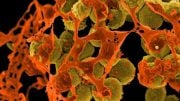


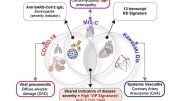

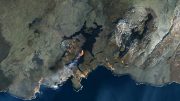
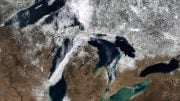
Carbon dioxide is considered a well-mixed gas. Despite its relatively high molecular weight, it rarely collects into pools with anomalously high concentration. Whether the tourists are releasing CO2 in Yellowstone, or in the city where they live, it all contributes to a small increase.
Now tourism is causing too much carbon?
They want you captive in a “15 minute” city like a slave that goes, eats, and lives the way they dictate all while they fly around the world ruling over the little people.
This carbon crap is one of the biggest scams in history. Just a way to fool suckers into giving up their freedoms.
If you, the respected manager, do not delete the previous comment, I am not worried about the dictator’s regime that can be a limitation for me because I have seen the power of God.He went to the army officers and they could not take me to the headquarters and harass me.I saw the power of God and…. the earth in the pictures that God and…. had drawn with the clouds as big as a big city, that’s why I was one of the black agents.And I am not afraid of mobilization, secret and intelligence of the regime, my father said, now that you have all the power of God in the sky, say that God will strike that leader and he will be overthrown so that the troops and… and the budget of the treasury and the lives of the youth of the Quds Force Hadar, the leader of the mullahs, I also began to pray and told God to go to the head of the commander of the Quds Force and tell him tostrike the head of that leader.Seven other people were also killed by rockets by Israel.I can’t talk to you about God’s miracles from here.I received an image from the sky that I have to show them in person.They are signs of God’s will and will, God is the guardian of truth.